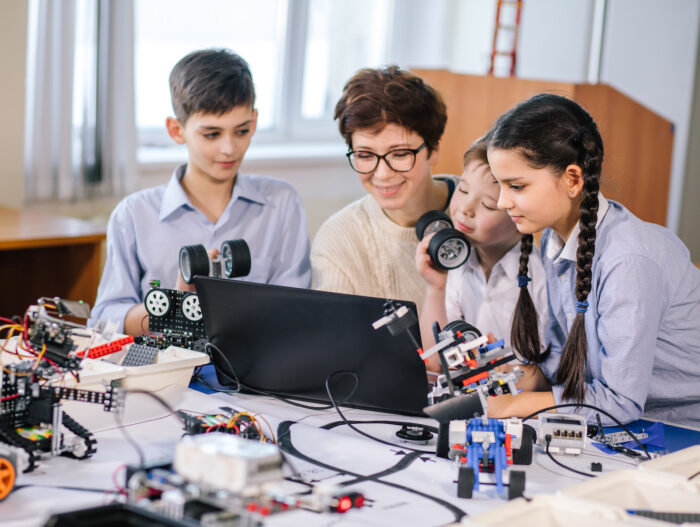
STEM Education, an acronym for Science, Technology, Engineering, and Mathematics, is a dynamic approach that intertwines these four disciplines in an application-centric manner.
It is not solely about the individual subjects themselves, but rather, technology and methodology are utilized to create an immersive, interactive environment, fostering problem-based learning and practical application of the academic concepts.
In modern society, where rapid technological advancements are the norm, the role of STEM education has become increasingly consequential. For today’s generation, grasping STEM concepts isn’t merely an academic requirement, but a necessity to thrive in a technology-driven world.
As such, STEM education has started to shape the models of teaching, revolutionizing the traditional classroom setup to a more interactive and innovative platform.
This reshaping not only facilitates an engaging learning environment, but also equips students with critical knowledge and skills, promoting their creativity, reasoning, and problem-solving abilities.
What is STEM Education?

To fully comprehend the impact of STEM, it’s important to understand what it stands for. STEM education is an approach to teaching and learning that integrates the content and skills of science, technology, engineering, and mathematics.
Rather than teaching each discipline separately, STEM combines them into a cohesive learning model based on real-world applications. The goal of this integrated approach is to impart a broad, deep understanding of these areas, urging students to apply their knowledge and develop innovative solutions to complex problems.
The four pillars of STEM, Science, Technology, Engineering, and Mathematics, each have their distinct significance. Science encourages observation and experimentation. Technology, tied with engineering, offers the resources for solving complex problems. Engineering is the design process to build better products, systems, or processes.
Mathematics makes sense of the numbers, patterns, and shapes we see in the world. This interdisciplinary approach not only enhances intellectual development but also introduces the learners to practical scenarios, making them adept at understanding and sorting out real-world challenges.
Encouraging STEM Education

Promoting STEM education within schools is vitally important, not just for individual academic accomplishment but for the technological and economic advancement of our society as a whole. Witnessing such a necessity, educators across the globe, including those who teach in New York, are actively incorporating STEM-based learning in their curriculum.
This approach introduces students to the diversified fields of science and technology at an early age, fostering inquisitiveness, logical reasoning, and creativity that can propel them to become future innovators and problem solvers.
The role of parents and educators is vital in encouraging STEM education. A concerted effort from both can provide the necessary encouragement and resources for kids to explore their interests in these fields.
Community partnerships, STEM-based events, mentorship programs, and the integration of technology in classrooms are some of the strategies to make STEM education more accessible and attractive to students.
Impact of STEM Education on the Classroom

STEM education has significantly changed the dynamics of the classroom, creating a shift from traditional textbook-based teaching methods towards more interactive and experiential learning.
Instead of rote learning where facts are memorized, students are now encouraged to ask questions, draw possibilities, formulate ideas, and find articulative perseverance to these ideas.
This active learning environment cultivates greater student engagement, better understanding of the content, and improved retention.
STEM education has substantially influenced the way students think and learn, by promoting creativity and critical thinking. In a STEM classroom, students don’t just learn concepts, they apply them. They are presented with real-world situations and are challenged to use STEM skills to solve them.
This application-based methodology fosters practical understanding and enhances problem-solving skills.
STEM education not only creates a more involved and dynamic learning environment, but also helps mold a generation of thinkers, innovators, problem solvers, and future leaders.
STEM Education and Future Innovators

STEM oriented education has a remarkable role in producing future innovators. It is aimed at offering the students a platform where they can integrate and apply knowledge from different disciplines, thus enabling them to innovate new concepts and approaches. It fosters critical thinking, problem-solving, and collaboration skills which are indispensable for the innovators of tomorrow.
Additionally, it cultivates resilience and flexibility amongst students as they learn to adapt and innovate in the face of challenging and unforeseen circumstances.
The holistic approach of STEM education also plays a role in imbuing 21st-century skills in its learners, which are increasingly identified as critical for future jobs. These skills include digital literacy, creativity, critical thinking, and problem-solving, all of which are interlaced throughout the various facets of STEM education.
By making learning interactive and application-based, STEM guides students in understanding the relevancy of their education to the world and lets them use technology more effectively and productively.
STEM education, with its unique interdisciplinary approach, is revitalizing the conventional classroom setup, shaping students into problem solvers and future innovators. It is therefore incumbent upon educators, parents, and all stakeholders to prioritize and support this form of education and harness its potential to prepare our younger generations for the challenges and opportunities of the 21st century.








